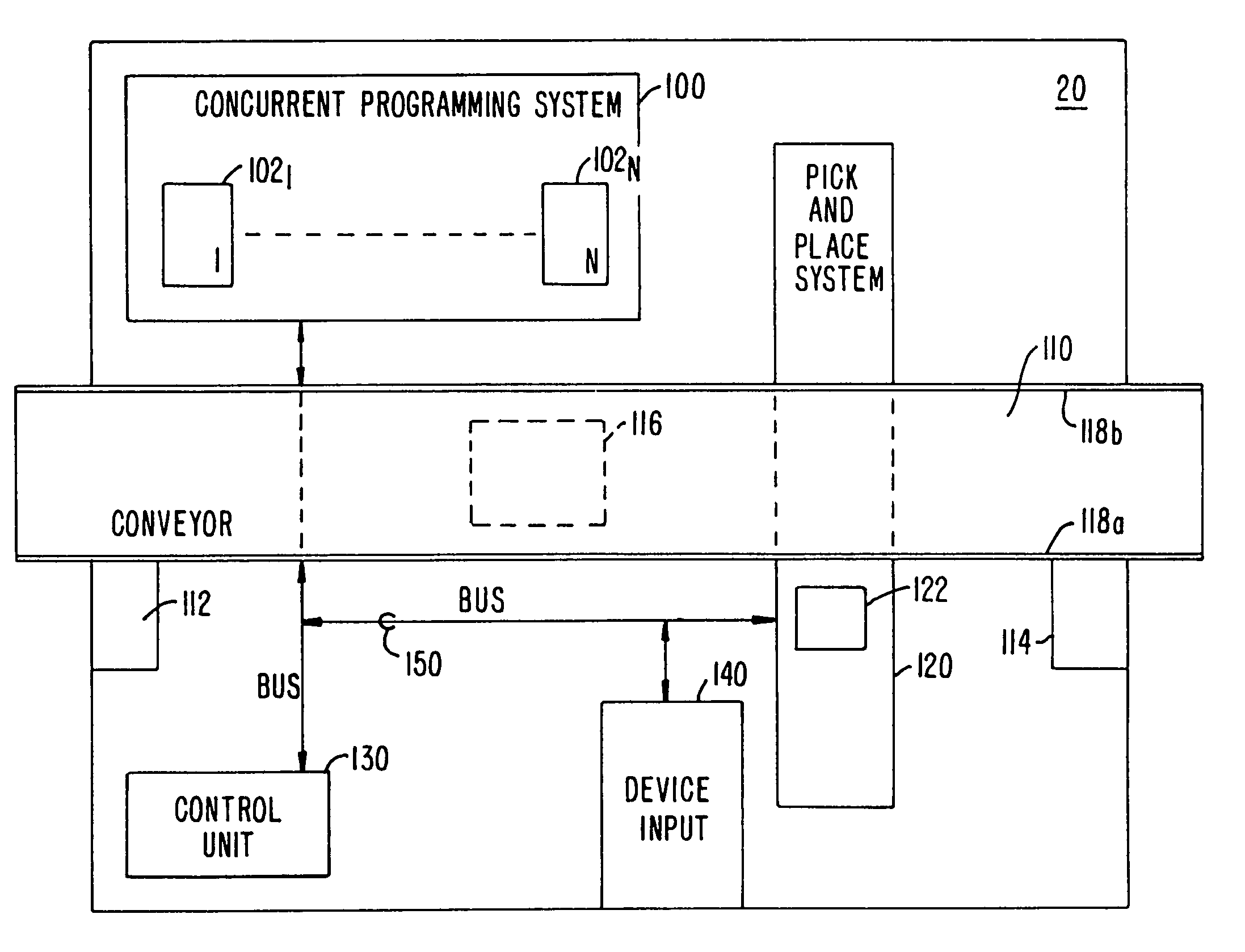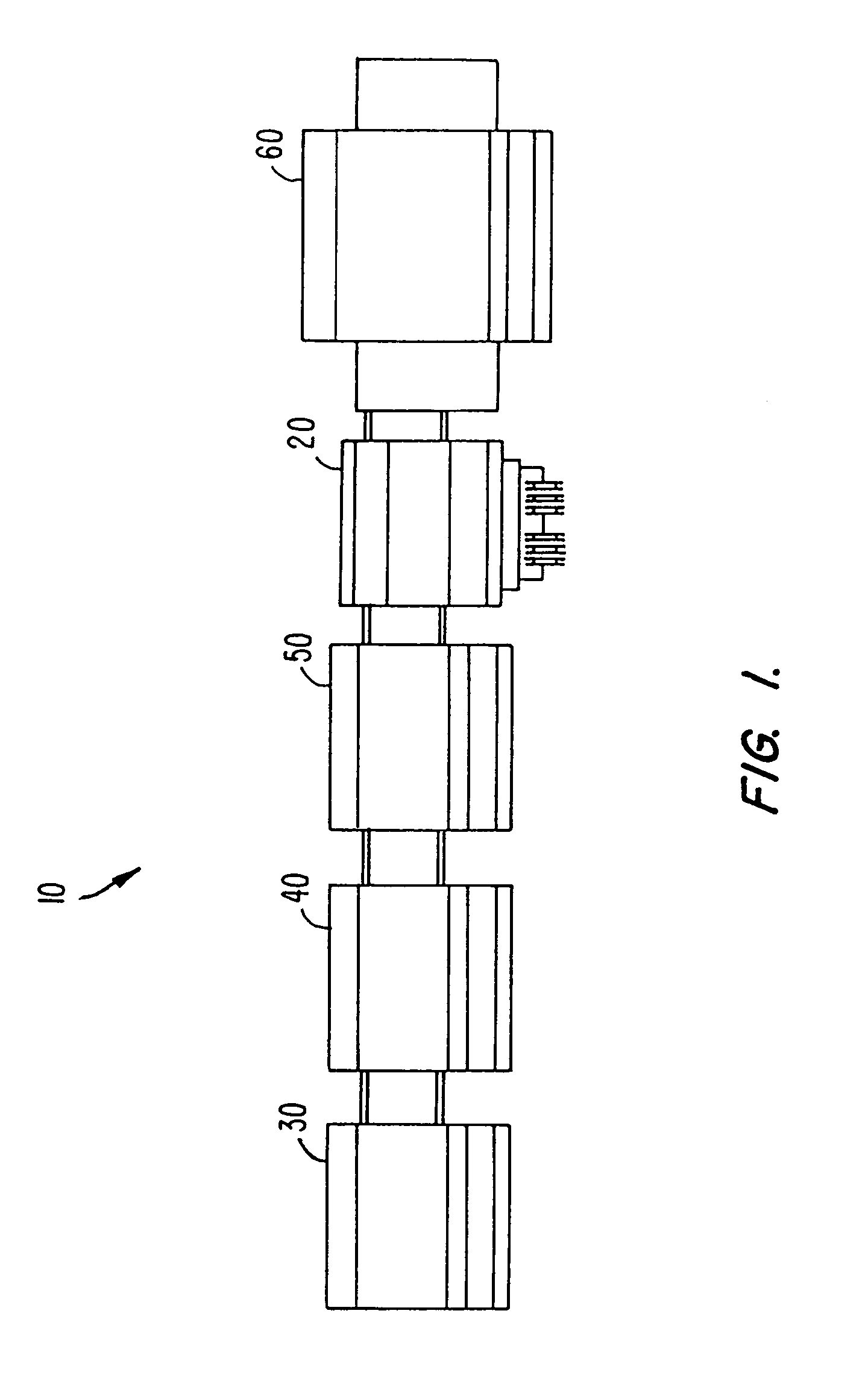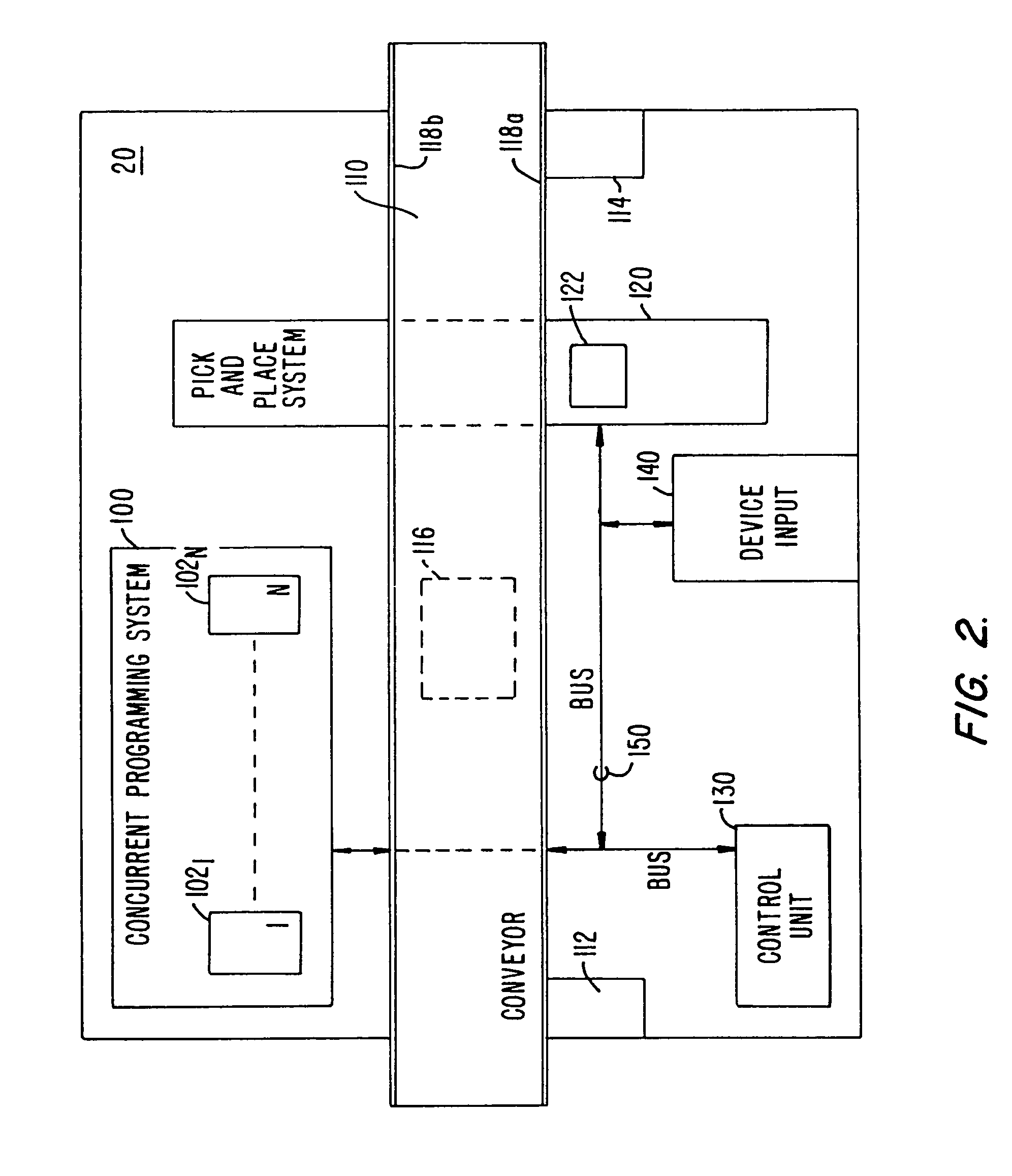In-line program system for assembly printed circuit board
a printed circuit board and program system technology, applied in the field of parallel automated programming of programmable electronic devices, can solve the problem that the pcba designer is not restricted in the choice of pics, and achieve the effect of faster production speed, higher quality and faster pa
- Summary
- Abstract
- Description
- Claims
- Application Information
AI Technical Summary
Benefits of technology
Problems solved by technology
Method used
Image
Examples
Embodiment Construction
[0021]FIG. 1 illustrates a block diagram view of a surface mount production line 10 including an inline programming apparatus 20 according to an embodiment of the present invention. As shown, surface mount production line 10 includes a linear array of machines or components that perform unique functions. For example, component 30 may be a stencil printer machine 30 that controls the application of solder paste to a blank circuit board. Component 40 may be a chip shooter machine that performs high speed placement of devices and circuit elements that do not require a high level of placement accuracy. Such devices and elements include resistors, capacitors, and the like. Component 50 may be a fine pitch placement machine that places devices at low speed with extreme accuracy. Component 60 may be a reflow oven that “cooks” the solder paste, thereby soldering to the board all the devices and elements that were placed on the board by the previous machines. Each component of production lin...
PUM
 Login to View More
Login to View More Abstract
Description
Claims
Application Information
 Login to View More
Login to View More - R&D
- Intellectual Property
- Life Sciences
- Materials
- Tech Scout
- Unparalleled Data Quality
- Higher Quality Content
- 60% Fewer Hallucinations
Browse by: Latest US Patents, China's latest patents, Technical Efficacy Thesaurus, Application Domain, Technology Topic, Popular Technical Reports.
© 2025 PatSnap. All rights reserved.Legal|Privacy policy|Modern Slavery Act Transparency Statement|Sitemap|About US| Contact US: help@patsnap.com



